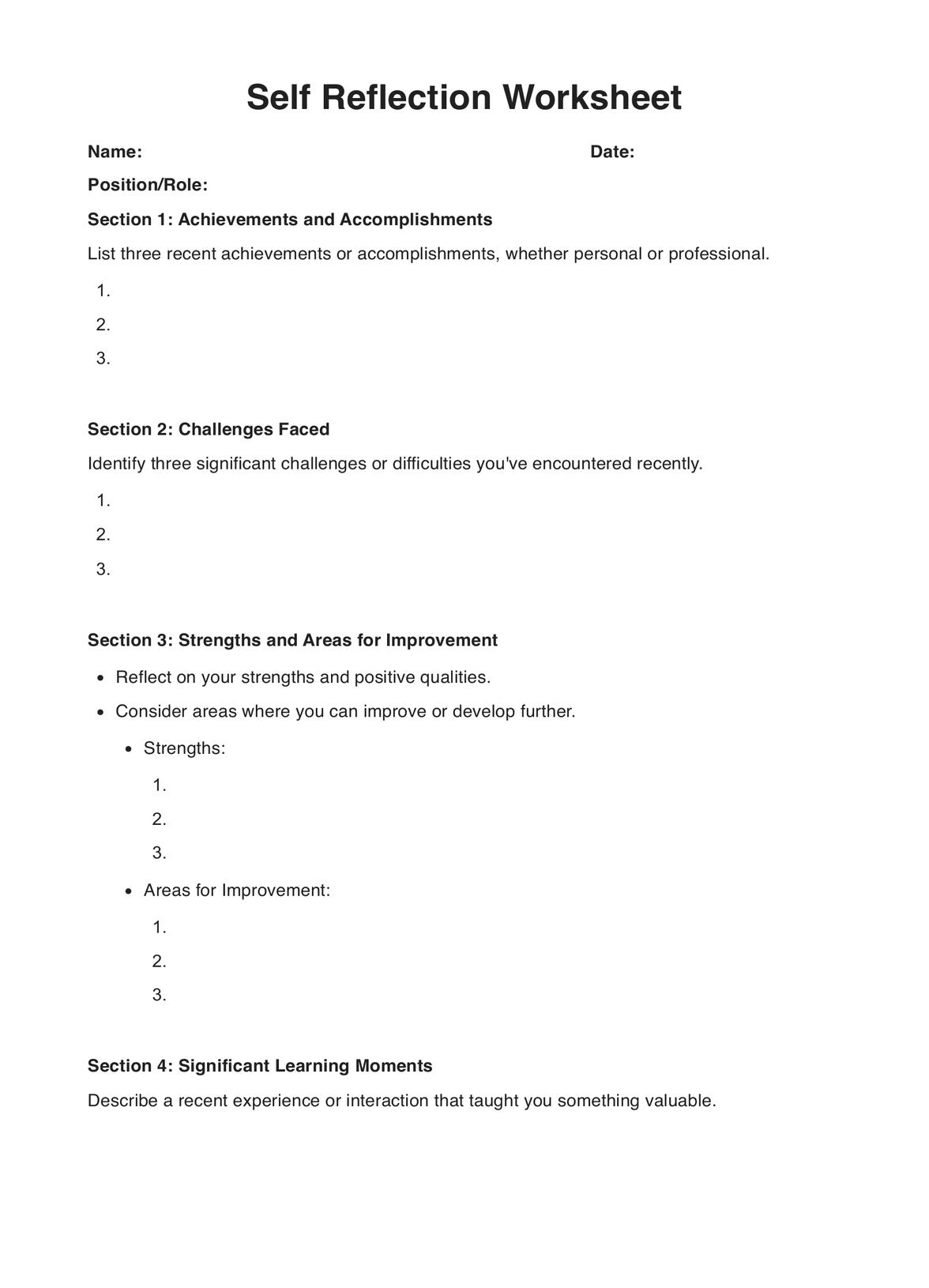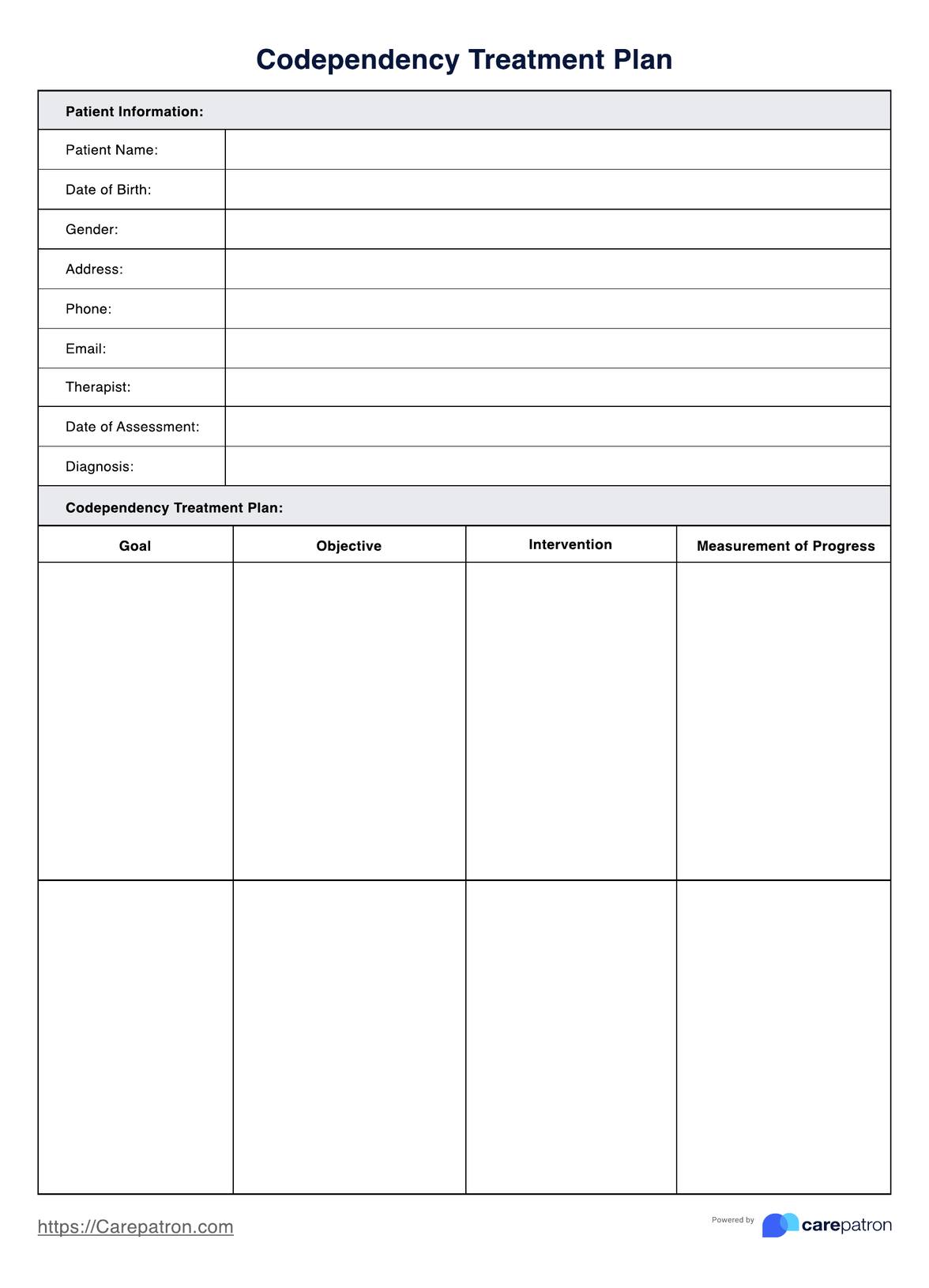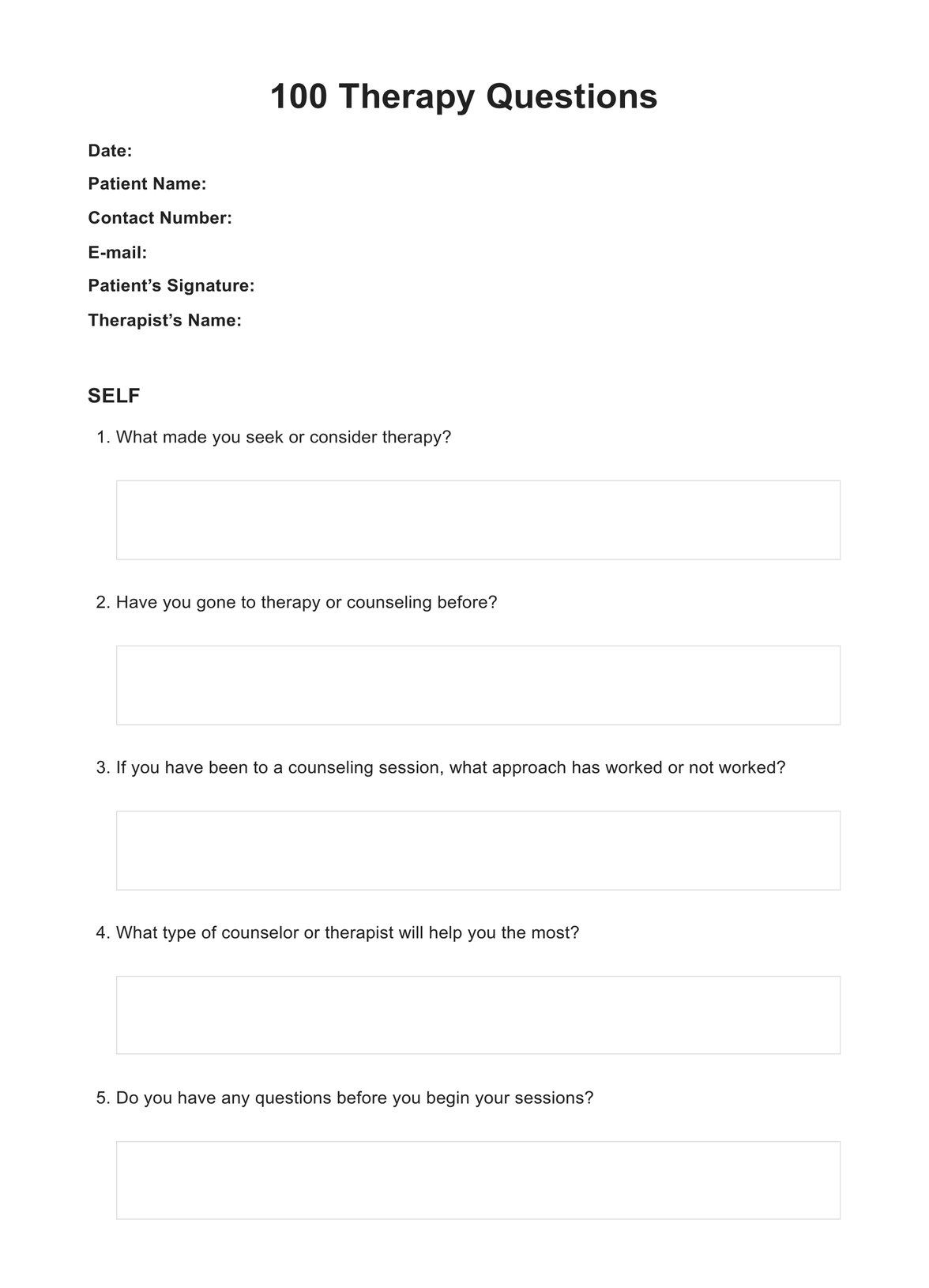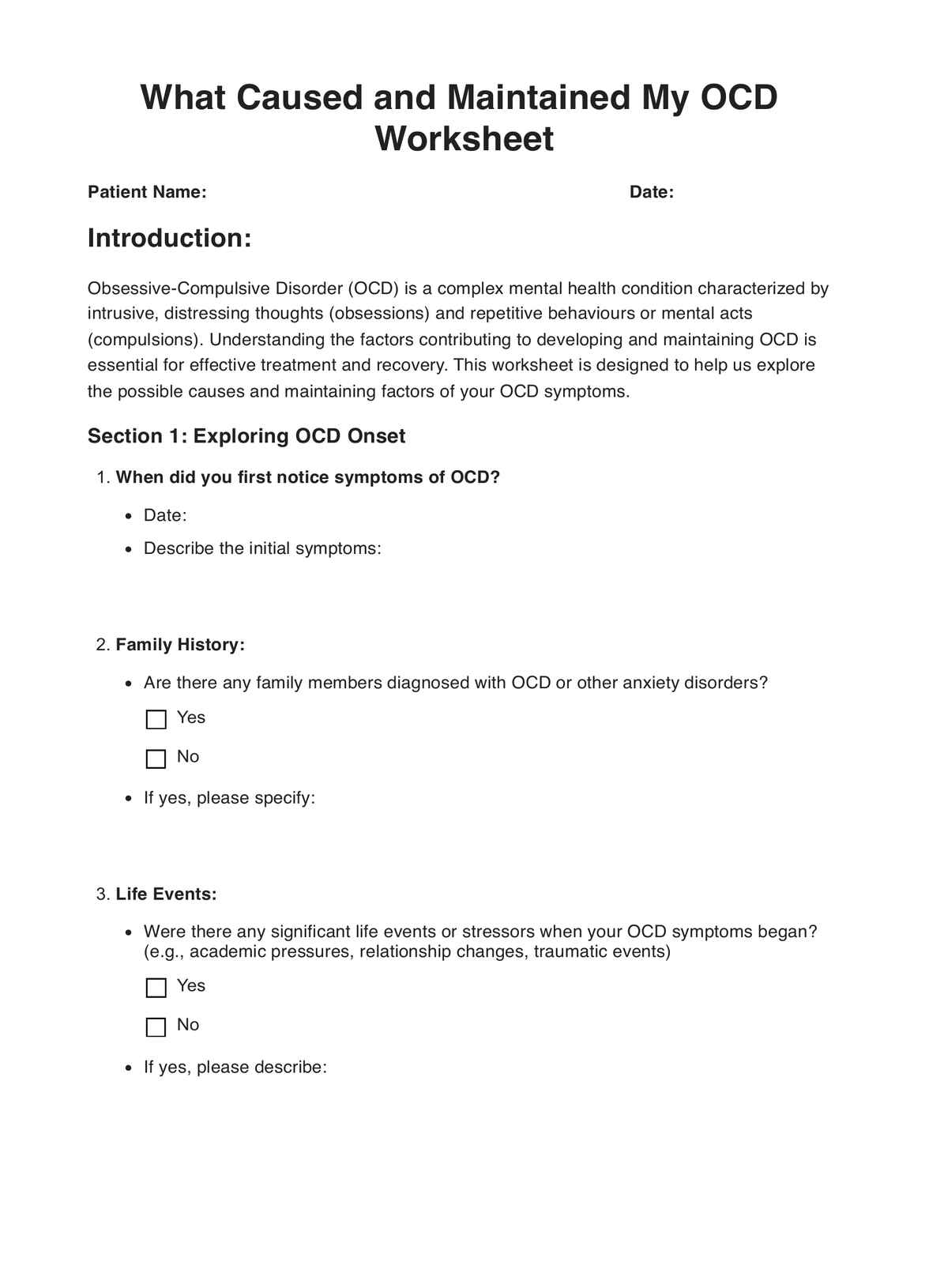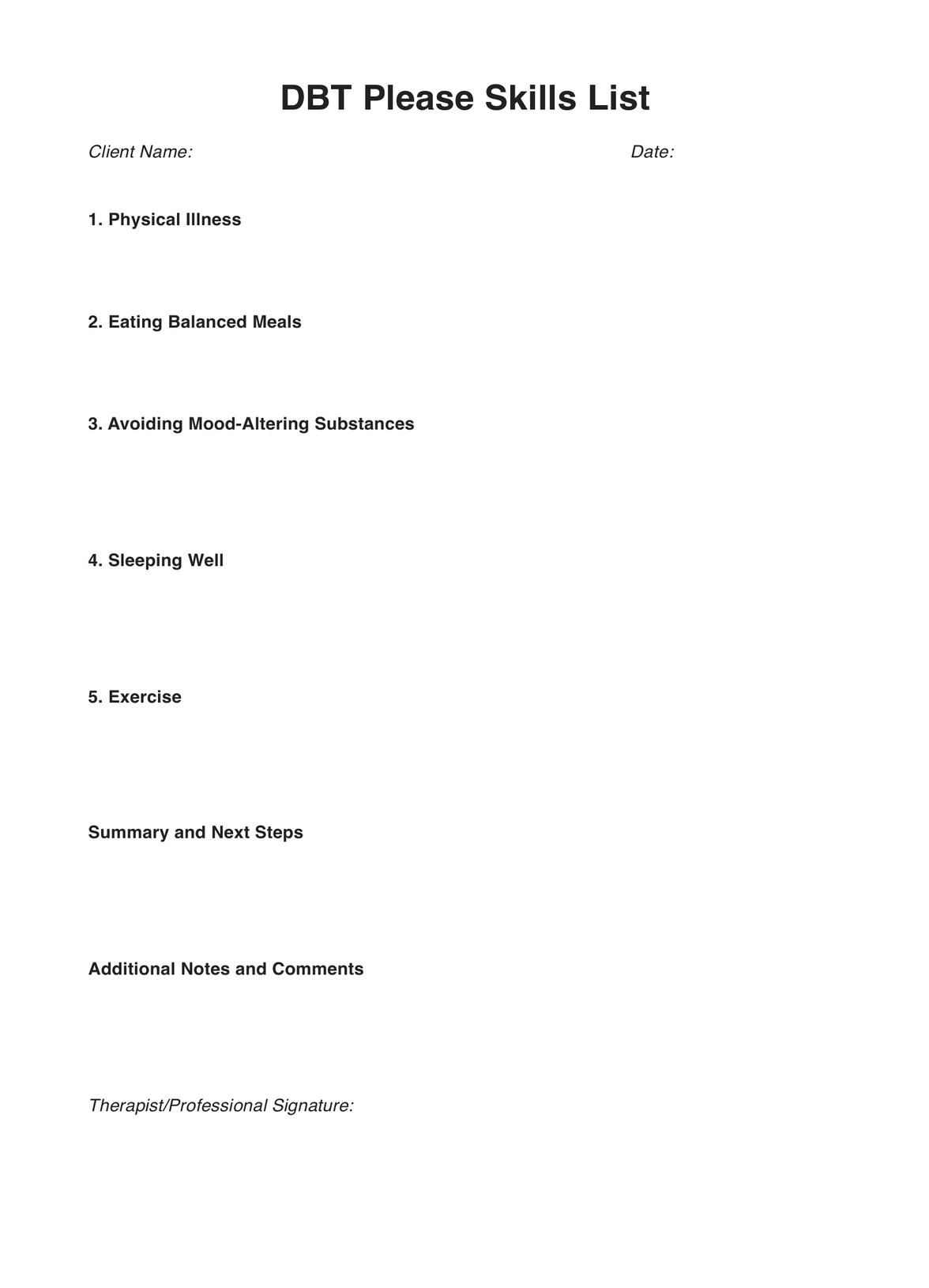Behavior Chain Analysis Worksheet
Issue the Behavior Chain Analysis worksheet to your DBT or CBT therapy client. Have them confront and assess their problematic behavior to help them develop healthier ways of responding and coping.


What is a Behavior Chain Analysis Worksheet?
A is a therapeutic tool used by dialectic behavioral and cognitive behavioral therapists. This particular worksheet is often used to help their clients come to terms with whatever problematic behaviors they have. The worksheet accomplishes this by:
- Having them identify their problematic behaviors
- Determining the events that triggered the behaviors
- Indicating what values their problematic behaviors go against
- Identifying their emotions, thoughts, urges, actions, and bodily sensations they’ve had when they exhibited their problematic behaviors
- Identifying what the consequences were after they exhibited these behaviors
By using this worksheet, clients can understand better why they have these behaviors, what they feel whenever they exhibit these behaviors, and what happens whenever they indulge them. The worksheet also helps them determine what healthy behavior they would like to or should exhibit instead so they have healthier ways of coping. Additionally, it gives them the opportunity to make more informed choices that don’t have any negative effects on themselves, their environment, and other people.
This tool can help clients to become more self-aware and self-reflexive through a thought and writing exercise, plus, it promotes behavioral change and goal setting.
Check out this video on our Therapy Worksheet to see how these resources can be accessed and used:
Behavior Chain Analysis Worksheet Template
Behavior Chain Analysis Worksheet Example
How does one use a Behavior Chain Analysis Worksheet?
Behavior Chain Analysis Worksheets are easy to accomplish since they contain guide questions. Clients just need to answer them as best and as descriptively as they can.
- First, you and your client need to identify their problematic behavior together. This behavior is something that they should want to change.
- Once that has been identified, ask your client describe this behavior by having them elaborate on what their emotions, thoughts, urges, actions, and body sensations were when they exhibited this behavior.
- Next, they need to identify is what specific event(s) caused this behavior, when it happened, where, what was going on when and before the triggering event occurred, and what they were feeling at that time.
- Then, the client will write about what made them vulnerable to the event that triggered their problematic behavior. They can write down if they were feeling lonely, anxious, taking drugs or alcohol, if they were stressed out by something, etc.
- After discussing their vulnerabilities, they need to indicate whatever values their problematic behavior goes against. This will play a role after discussing everything related to their problematic behavior. Make sure to have your client detail their beliefs and why they hold onto their values.
- Last, they need to discuss the consequences of their problematic behavior in terms of how it affected their interpersonal relationships, their surroundings, their emotions, and other things that it might have impacted. Have them write about the short-term and long-term consequences of their actions, whether these are already apparent or consequences they expect to surface down the line.
- Once they’re done writing everything related to their problematic behavior, have them think about their values again. Then, tell them to write what they should have done differently while considering these values. You can have them list and describe better behaviors that they should do moving forward in case a similar problematic event happens that may trigger the same problematic behavior.
- Lastly, they should discuss what they are planning to do regarding the consequences of their problematic behavior. Try to have them develop solutions and think of possible good outcomes when they take action.
These are all the things that your client needs to do. Give them the time and space they need because this will likely be a heavy topic for them.
When is it best to issue a Behavior Chain Analysis Worksheet?
The best time to issue a Behavior Chain Analysis worksheet to your client will depend on your therapy sessions with them.
One of the best times to do so is if your client discusses their problematic behavior and their desire to work through it and change for the better. It’s even better if they know that their behavior is problematic because that will make it easier for them to confront themselves. Before you issue this to them, make sure to explain what this worksheet is for so that they know what needs to be done, then you can have them spend some alone time with themselves so they can answer it, or if they want you around, you can be there to provide support and help discuss ideas.
This can also be issued when dealing with clients who struggle to manage their emotions effectively and healthily. By identifying problematic behavior related to emotional outbursts and the negative ways they cope with their outbursts, clients can examine their negative thoughts and the consequences of the negative things they do related to their problematic behavior. It allows them to increase self-awareness, essential for finding better ways to process emotions and prevent outbursts.
What are the benefits of using the Behavior Chain Analysis?
It can help professionals understand their clients better.
Problematic behavior isn’t something that people talk about willingly. Some clients might find it easy to discuss with their therapist, but most people are generally uncomfortable about it. This worksheet can help therapists get to know their client better because if their client is struggling to communicate what they think regarding their own behavior, perhaps they can do so through writing!
Who knows? They might be able to express themselves better when they do so. The act of writing is therapeutic in its own right. By engaging in this exercise, clients might be able to be more willing to discuss their problematic behaviors through conversation, especially if you need them to expound on their answers.
It can help clients realize things about themselves.
You shouldn’t be surprised if you are dealing with a client who isn’t self-aware about their problematic behavior. That’s because some of them might not even think of their behavior as problematic until you give them the necessary tools and space for them to realize that. This worksheet might just do the trick. Once they identify their problematic behavior, they will also be able to identify things like what triggered their behavior and what happened because of their behavior. By becoming self-aware, they will have the opportunity to find healthier ways of coping with certain events that may trigger their problematic behavior.
It can instill motivation in clients to set goals for change.
Being self-aware about your problematic behaviors can be empowering because you can think about the consequences of your behaviors in both the short term and long term. By identifying the consequences of their actions, clients can find ways to correct what or who has been wronged because of their problematic behavior, they can think of alternative ways of coping and reacting to potentially triggering events, and they can identify what good consequences can result from better coping mechanisms. They can set goals to work toward.
A completed worksheet can help therapists personalize their care for their clients.
Once the client opens up through this worksheet, they’ve become self-aware about their problematic behaviors, and they have determined what they can do as alternative responses to negative scenarios, therapists can tailor-fit their therapy plan for their client in a way that helps their client attain whatever goals were set on the worksheet. Therapists can help build strategies alongside the client, identify and help establish potential support groups, and determine healthy ways of coping should triggering events happen.

Commonly asked questions
No. It’s just used to primarily address problematic behaviors. However, it can be used for any behavior the client wants to discuss. If it’s a good behavior, the worksheet can be used so that the client can find ways to reinforce their good behaviors and identify potential triggering events that may cause them to do the opposite. By identifying potential triggering events and problematic behaviors, they can determine what they can do to avoid or healthily cope to prevent them from enacting problematic behaviors.
The therapist and their client will sit down to identify and discuss the client’s behaviors (problematic or not). The therapist will guide the client when it comes to identifying their behavior and determining what caused their behavior, what the consequences of their actions were, and what they can do in place of their problematic behavior moving forward.
Yes, you may. You can fill it out as a self-reflection exercise if you think it will help you, however, it’s best that you see a therapist so you can cover more ground than you can cover on your own.


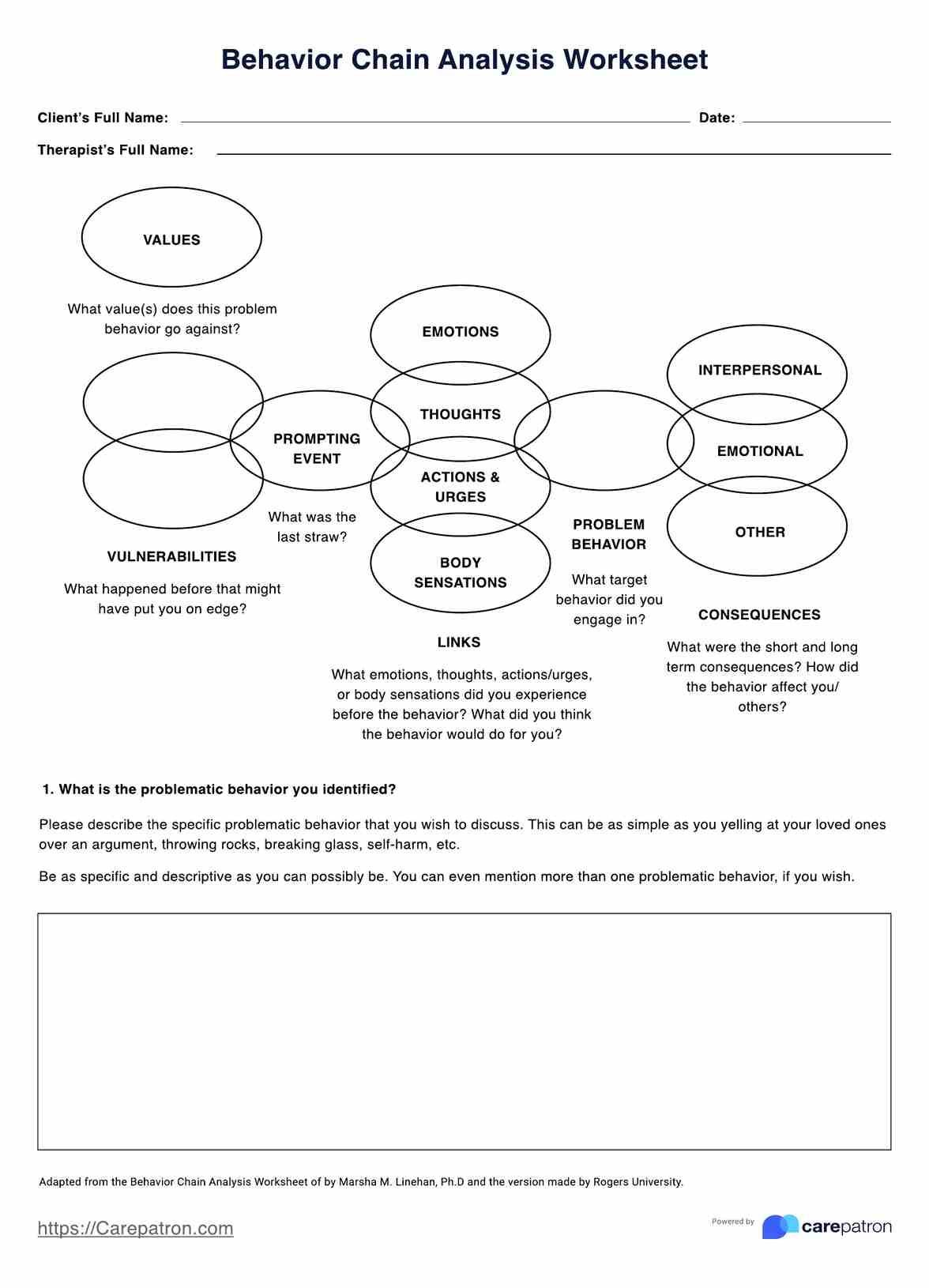
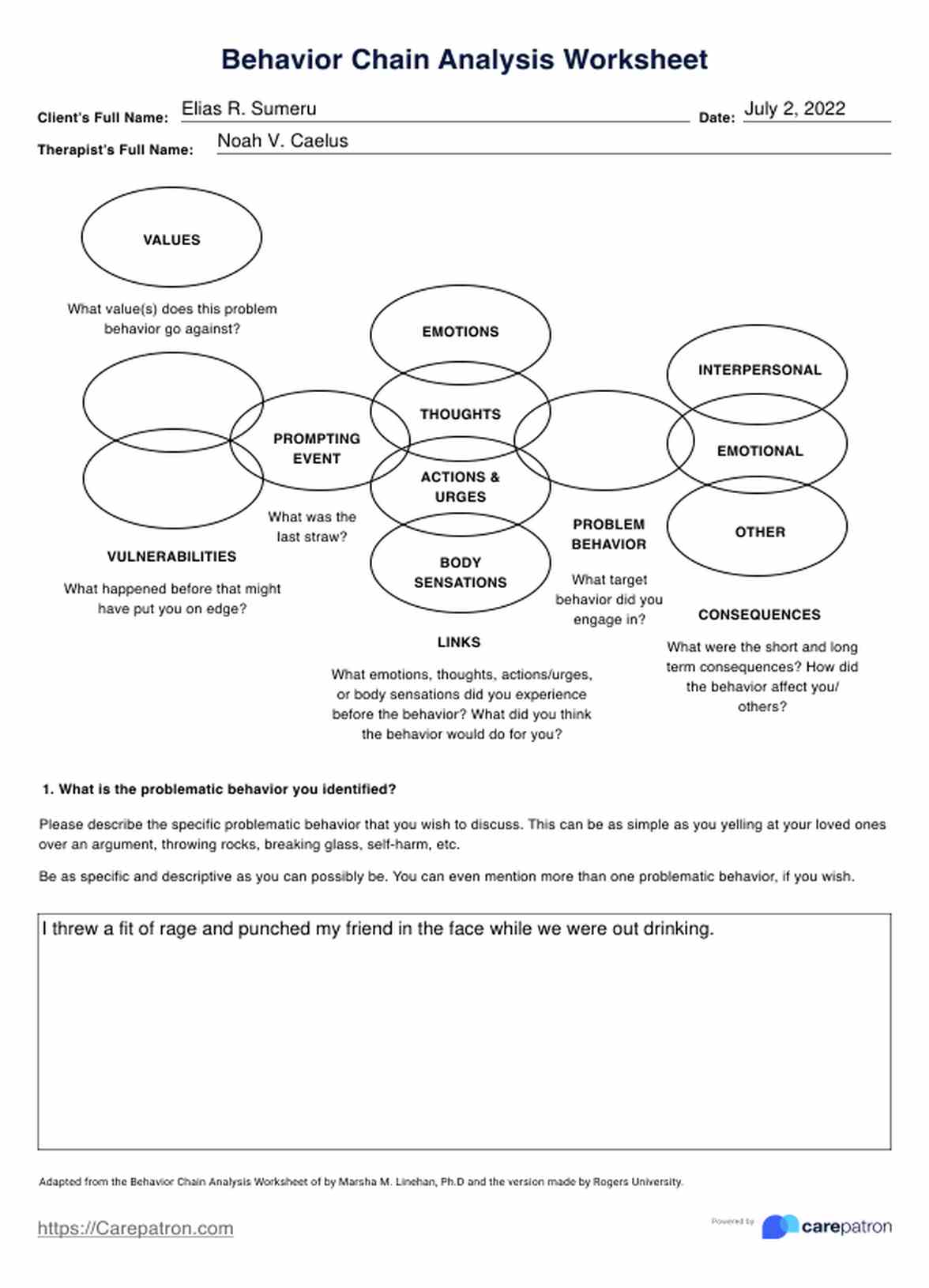

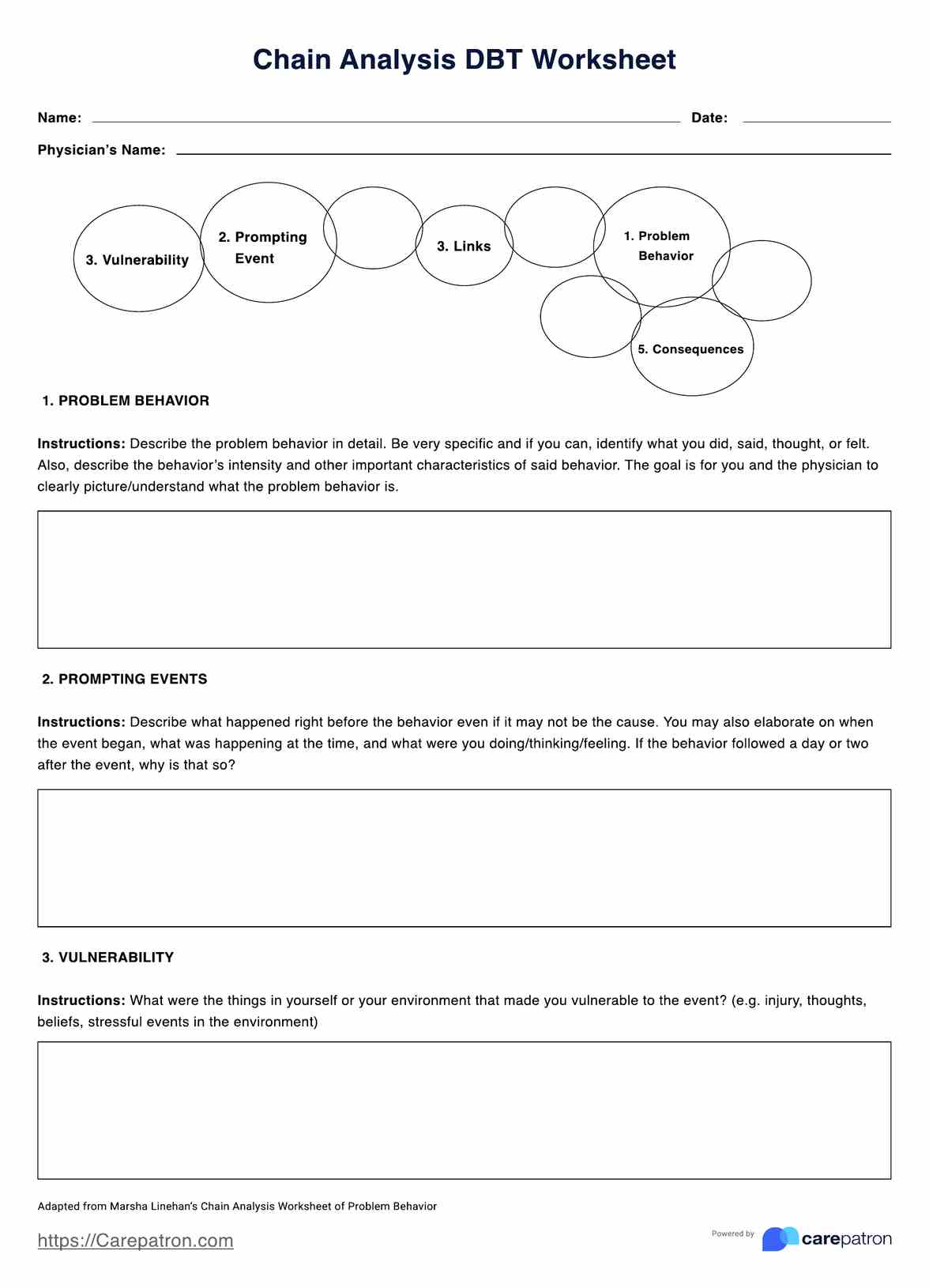














-template.jpg)





















































































